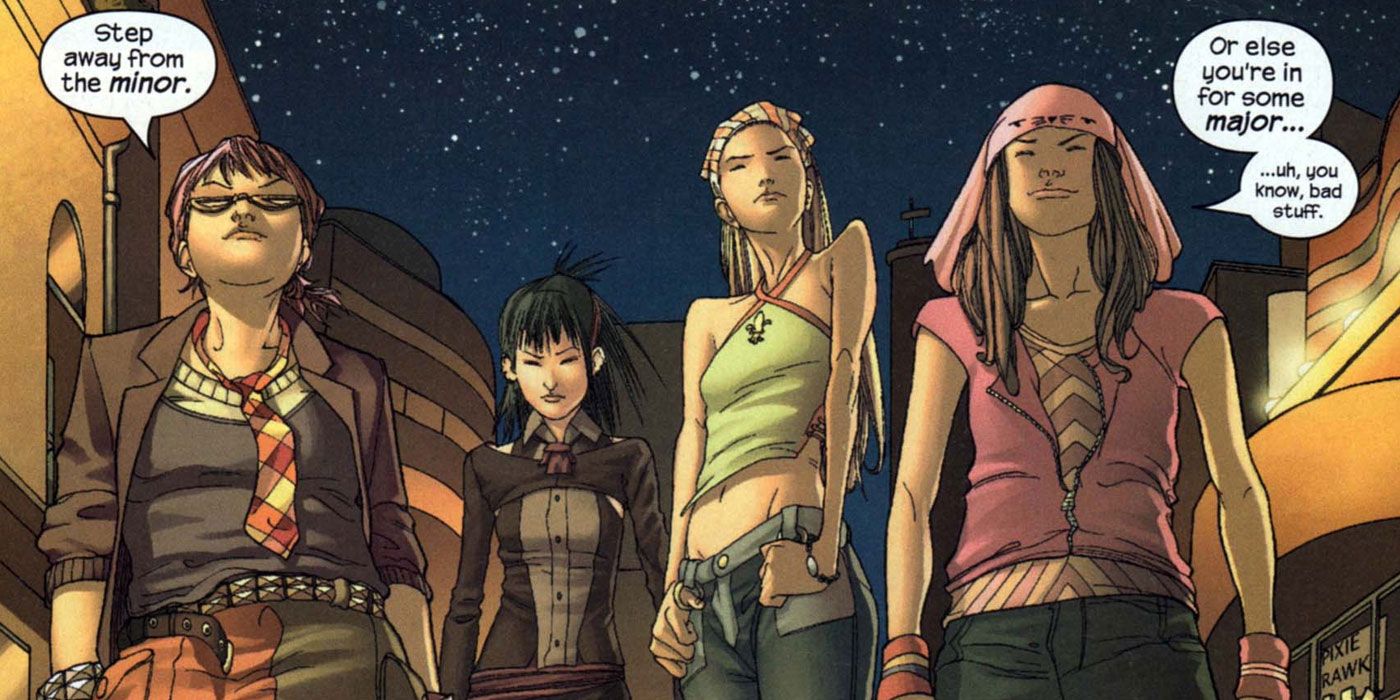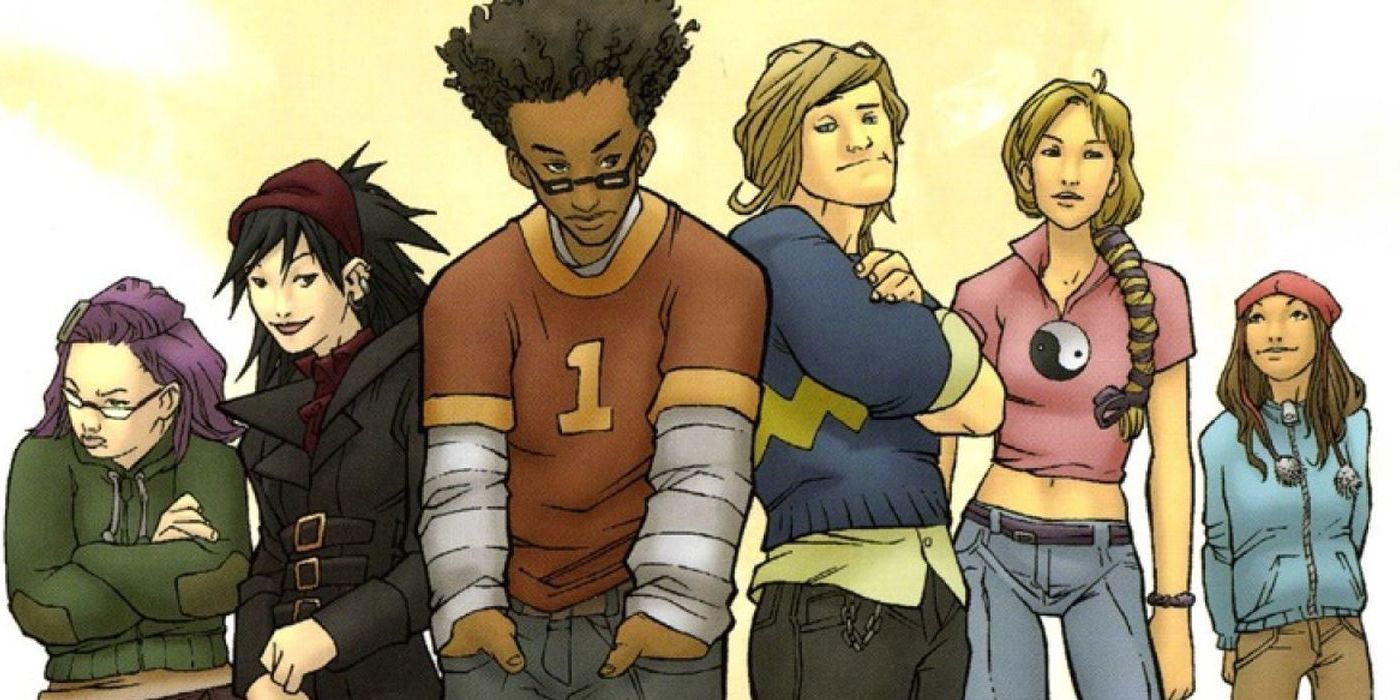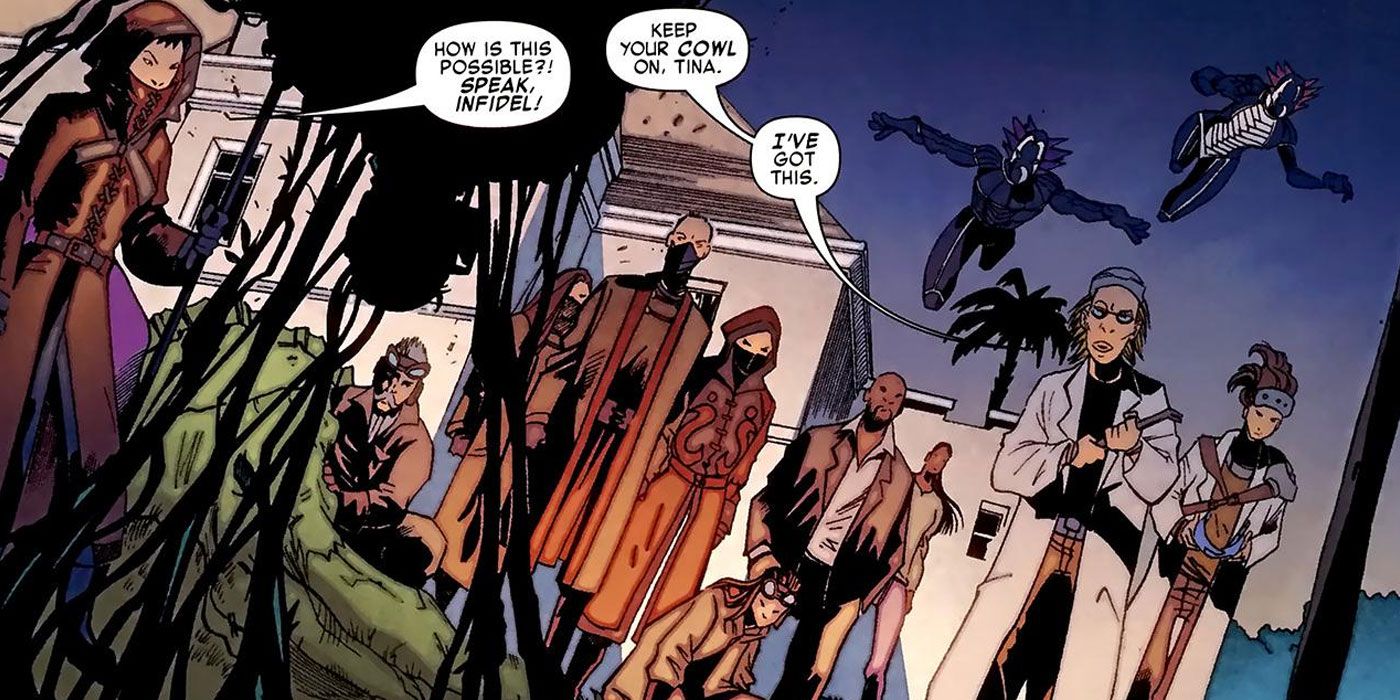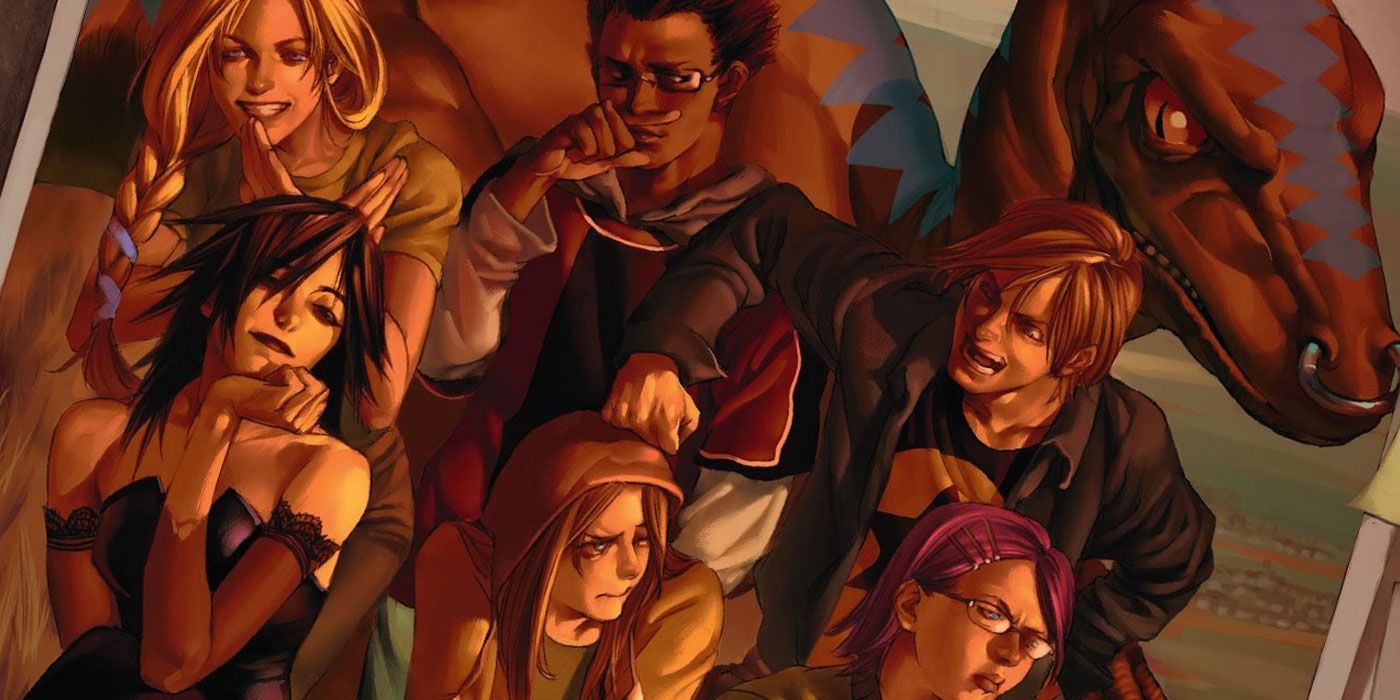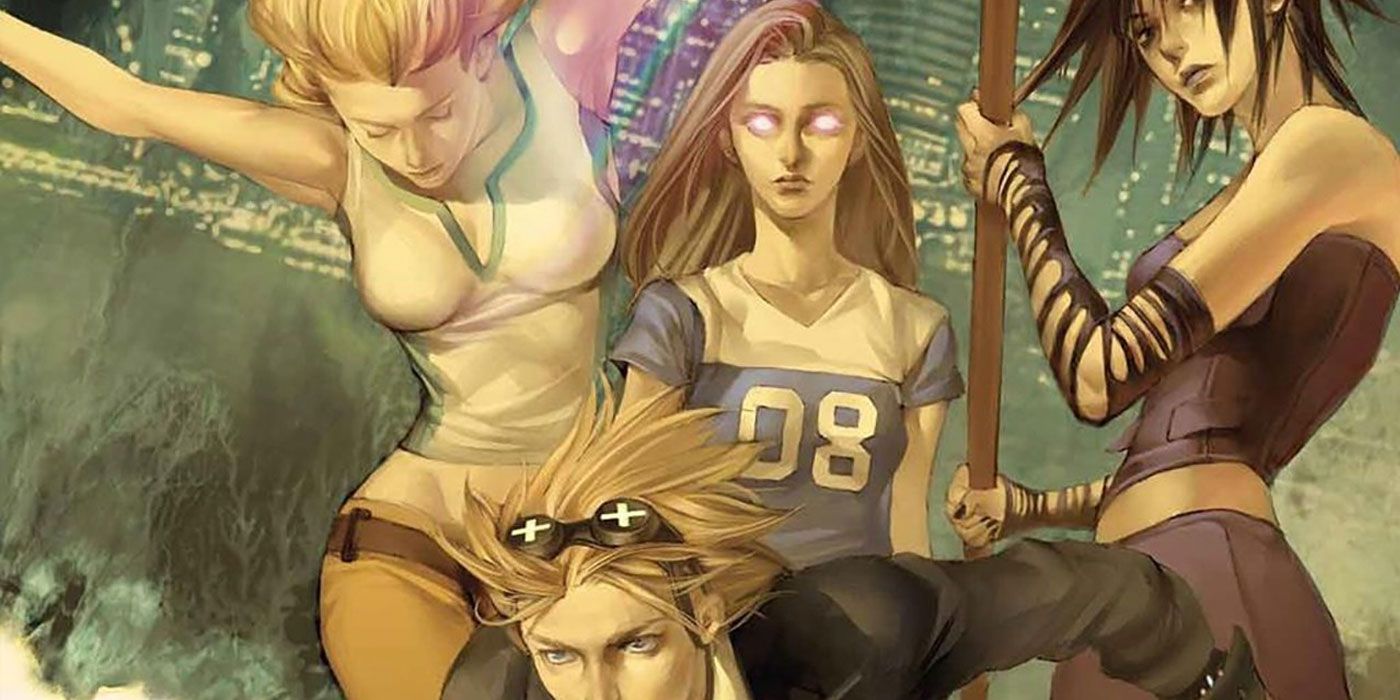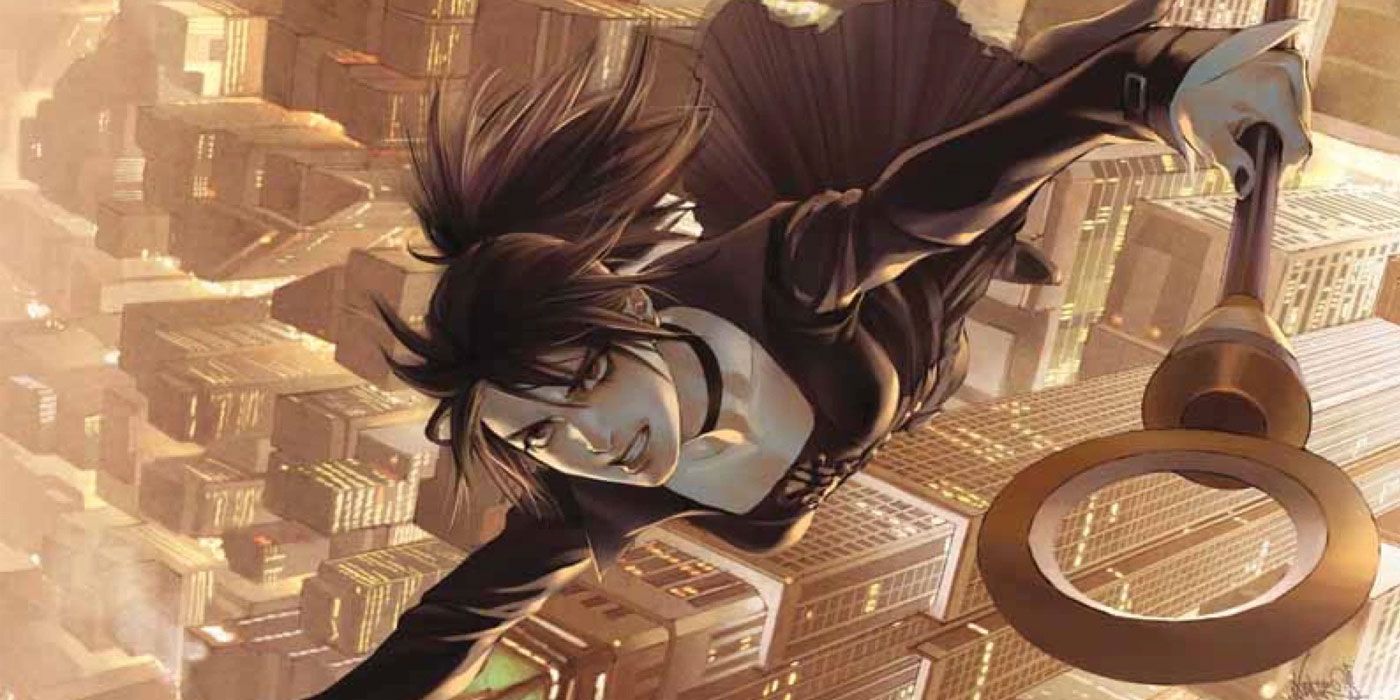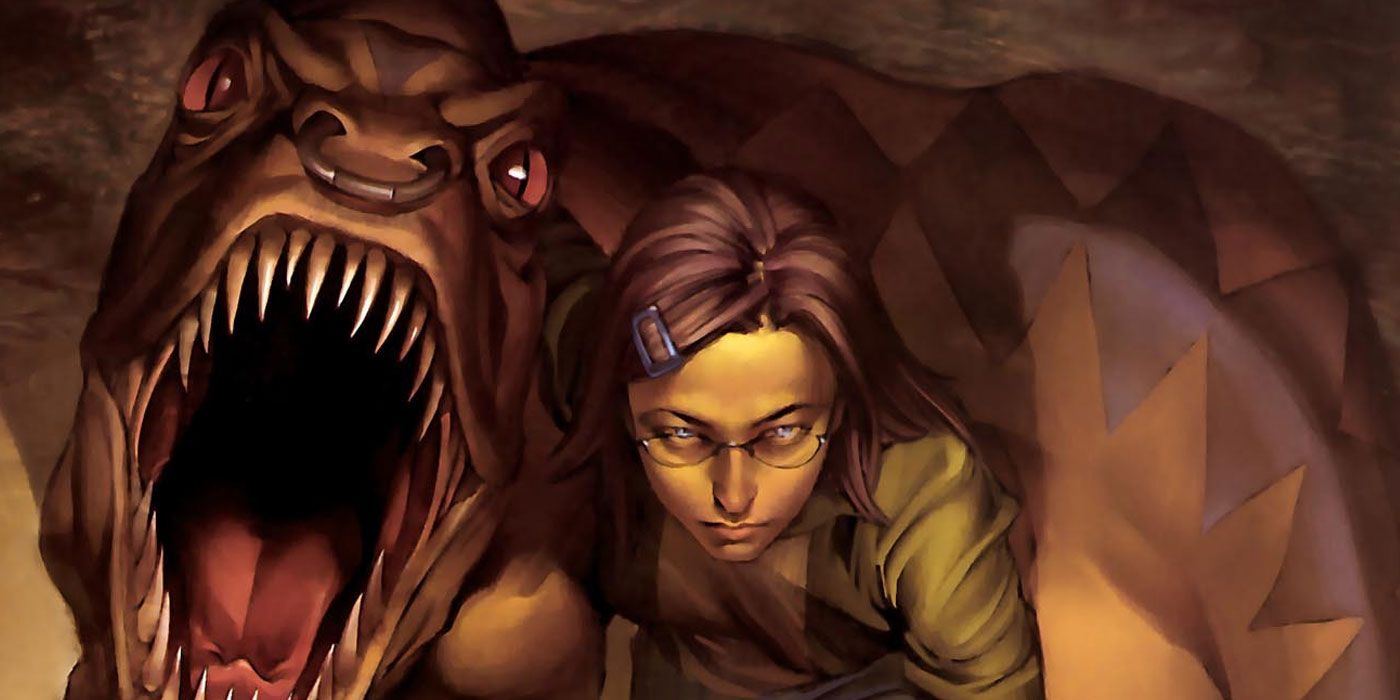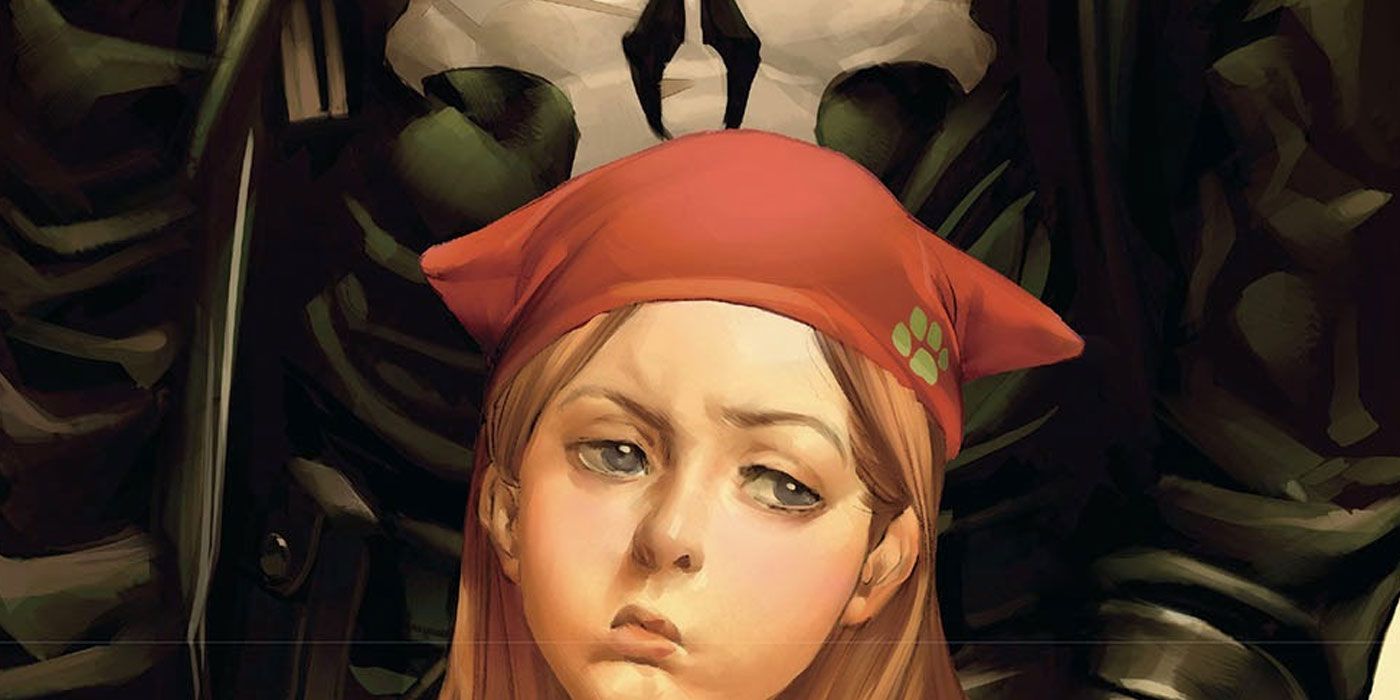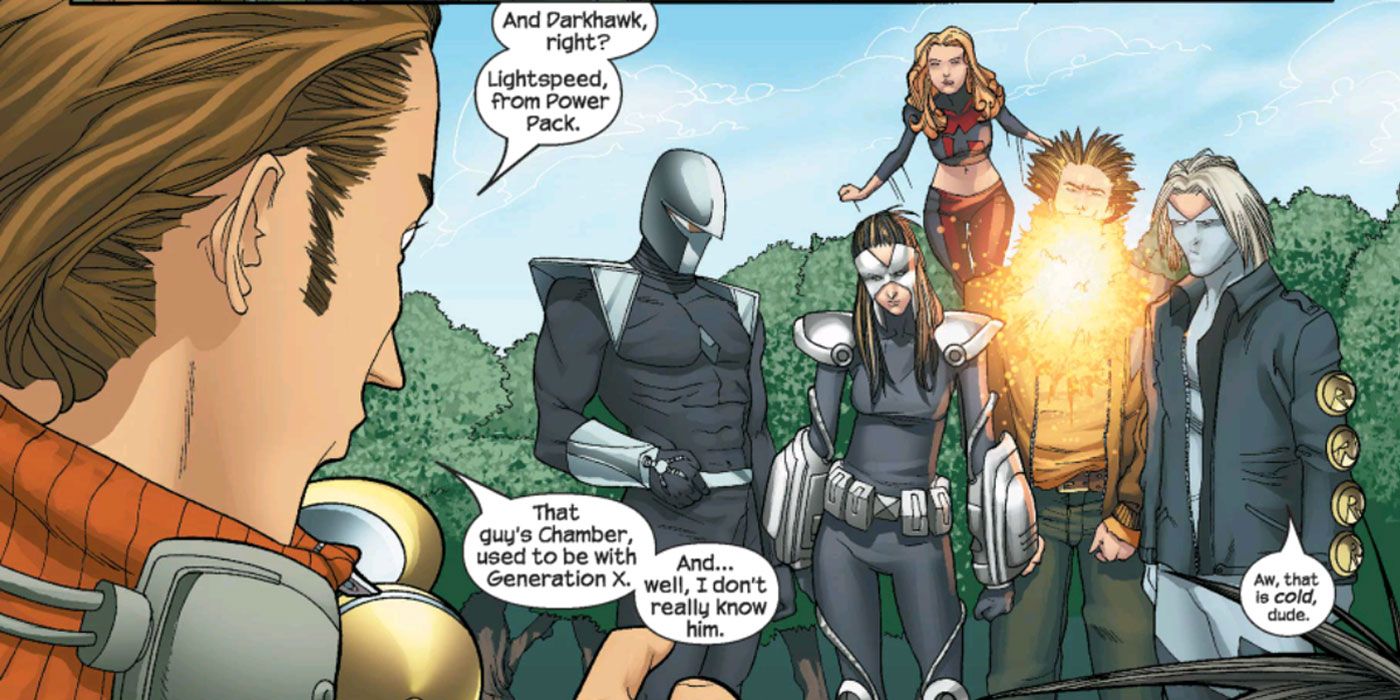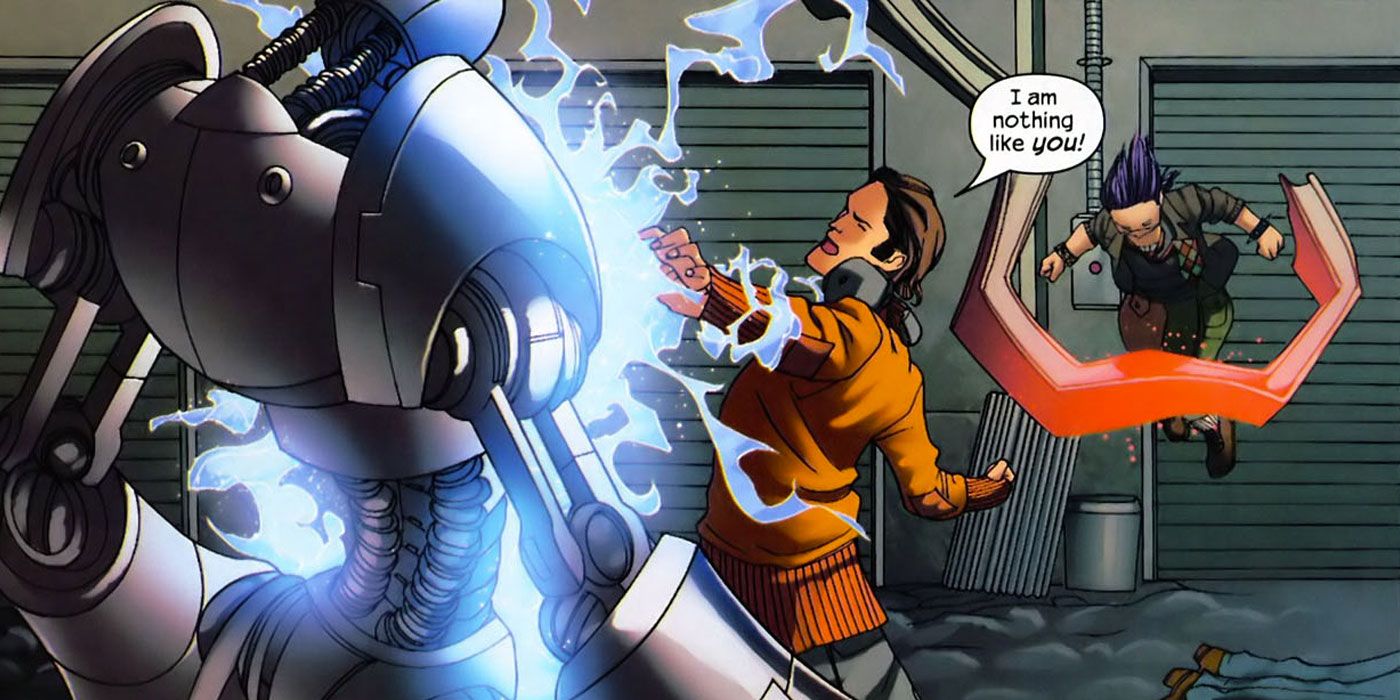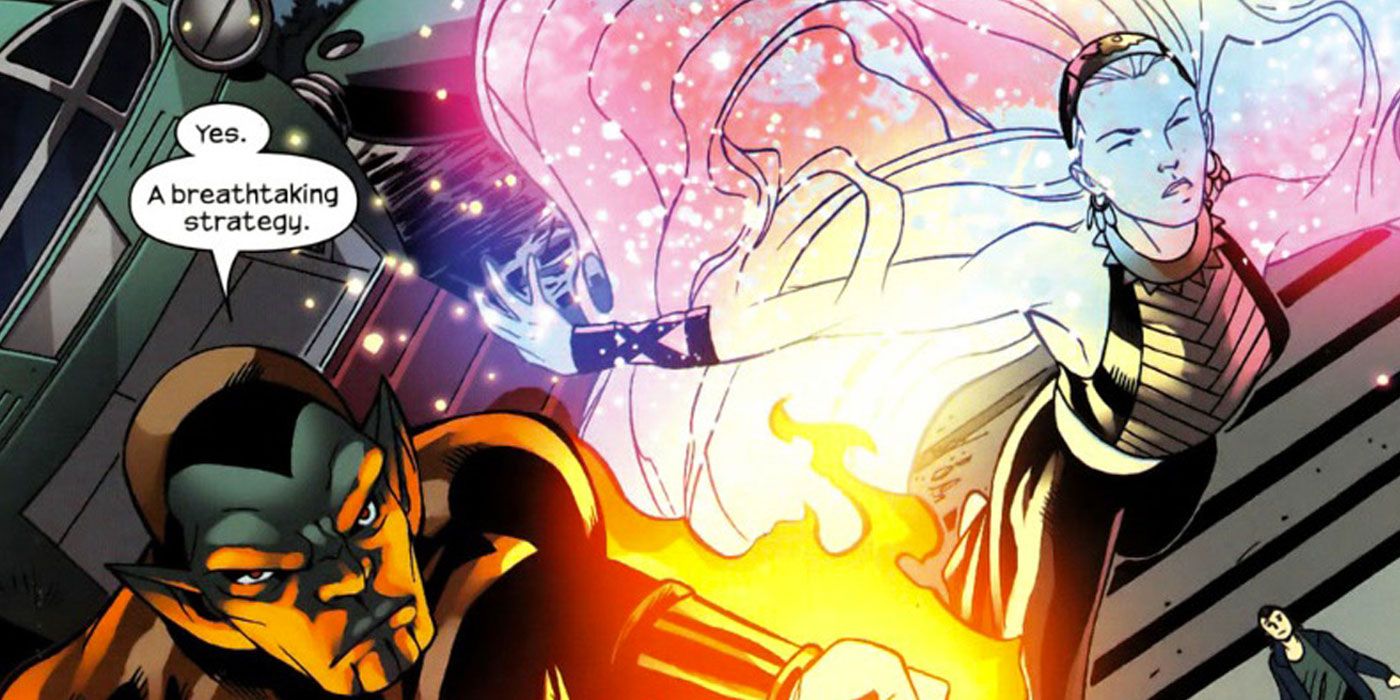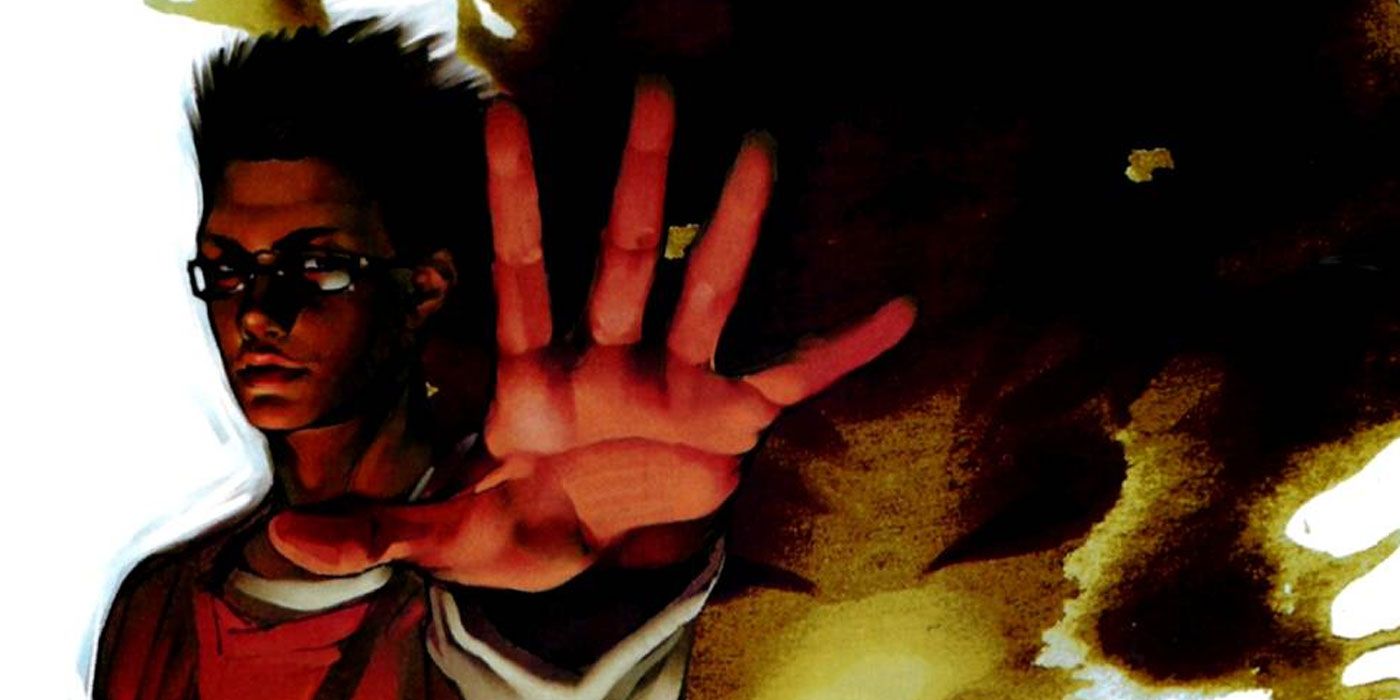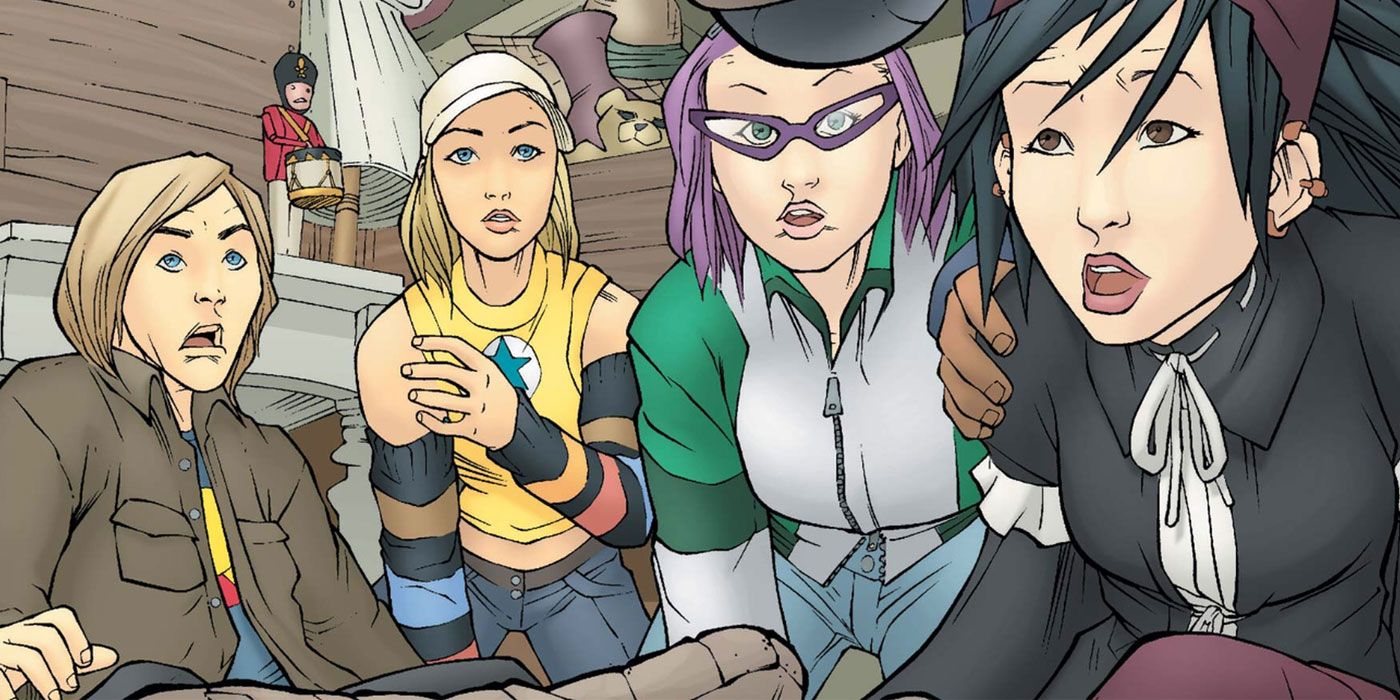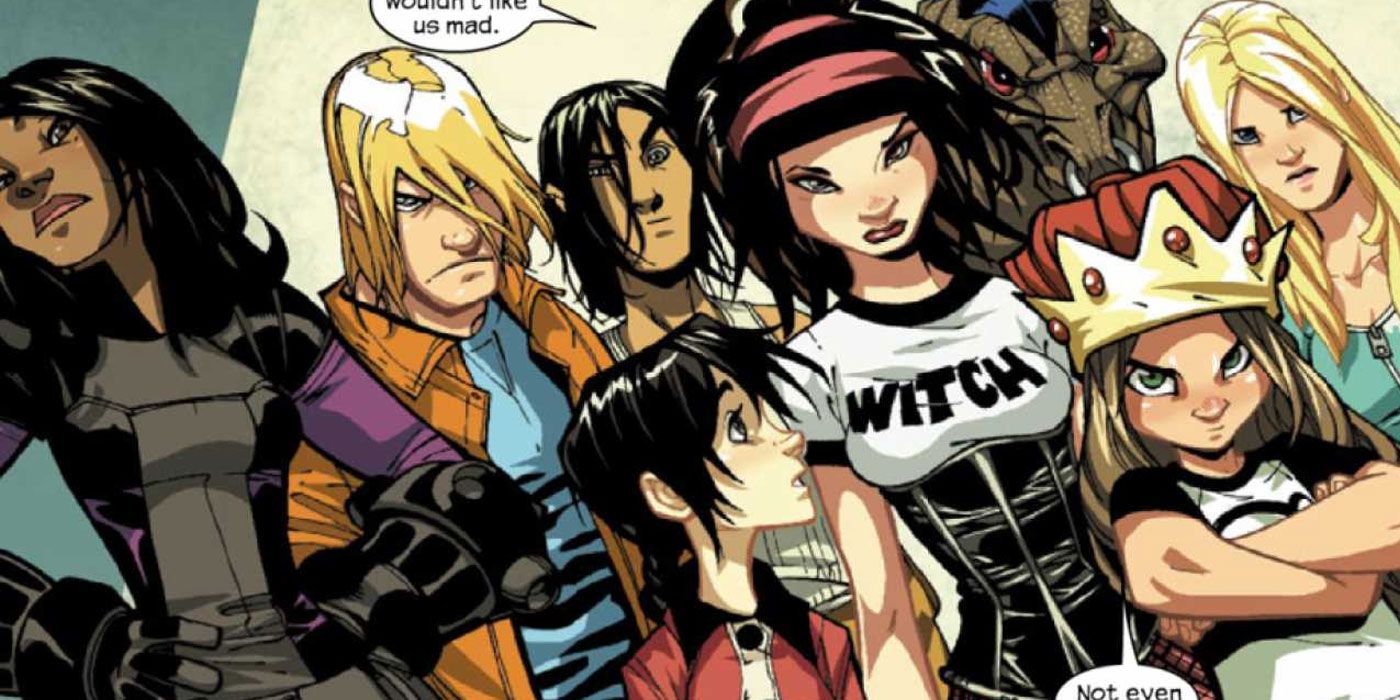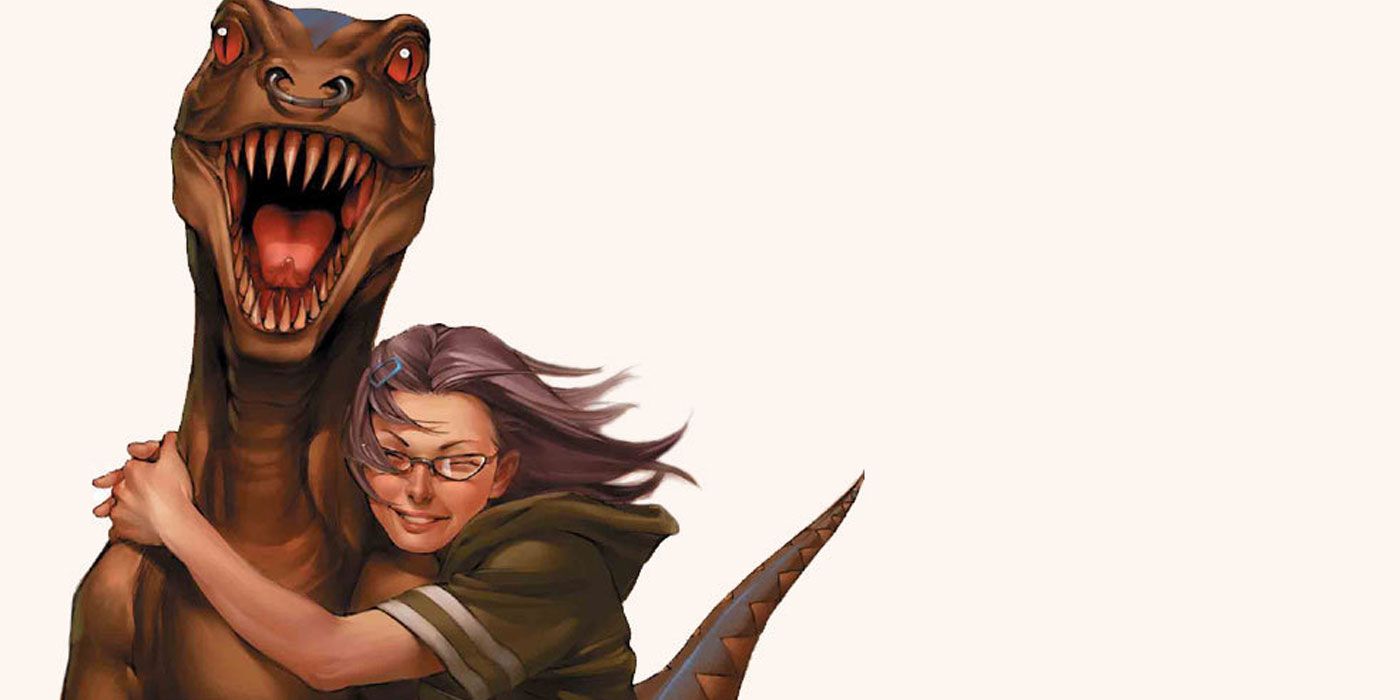The “Runaways” have had a rocky path to live action TV. Brian K. Vaughan and Adrian Alphona’s cult favorite comic series, about a group of teenagers who discover their parents are secretly supervillains, has been stuck in development hell for years, with a movie script by “Iron Man 3”’s Drew Pearce going unproduced. Now it’s moving forward as an original series for streaming service Hulu, and with the main cast just announced, it finally looks as though the crew may finally make it to TV.
RELATED: 15 Forgotten Live-Action Comic Book TV Shows
There’s a certain amount of pressure to get it right, of course, between the fluctuating quality of the small screen Marvel Cinematic Universe and the loyal, vocal fanbase the series has to this day. With that in mind, here are 15 things we think the “Runaways” show needs to get right to be a smash hit.
15 NO CODENAMES, NO COSTUMES
The Runaways are a non-traditional team in many ways. They’re a group of teenagers, but unlike the X-Men in their early days, they have no paternal leader to provide moral guidance. In fact, their whole mission is about mitigating the actions of and eventually taking down their supervillainous parents. For the most part, they shirk team ups, have an underground lair more suited to bad guys, and are literally on the run, both from their parents and child services. Then there’s the fact that they opt not to adopt costumes.
They did briefly flirt with codenames, before dropping them. The MCU has been refreshingly committed to cladding its heroes in the same colourful outfits and alter egos as their comic book sources. Equally, though, the concept of secret identities has been less of an issue: Tony Stark cast his aside at the finale of the first “Iron Man” movie, everyone knows Steve Rogers is Cap, and so on. It’s probably not good for merchandising -- you can’t really sell Halloween costumes of regular teen clothes -- but here’s hoping “Runaways” is similarly committed to no codenames and no costumes, setting the team and their series apart.
14 PROPER SUPERVILLAIN PARENTS
Marvel has a supervillain problem. In every “Iron Man” movie to date, another incredibly talented actor has taken the role as “evil corporate man.” Christopher Eccleston was hidden behind makeup and inexplicably given barely any lines as the antagonist of “Thor: The Dark World,” while Tim Roth’s Oscar “In Memoriam” segment will likely not feature his turn as The Abomination in “The Incredible Hulk.” The Netflix shows have been better served, with memorable turns by Vincent D'Onofrio as Wilson Fisk and David Tennant as Kligrave, among others.
Those stronger examples aren’t particularly supervillainous, however, opting not to use their alter egos of the Kingpin or Purple Man, respectively. It’s as if much of the MCU follows the lead of “Wanted,” which turned supervillains in the comic into Matrix-style gun-wielding baddies in live action. The Pride are supervillains through and through (in the “Runaways” comics, they use powers of science and magic to exert control over the criminal activities of L.A.) and part of the rebellion of their kids is the rejection of the same codenames and costumes they use. The on-screen Pride should follow the same dress code, at least!
13 THE SOUNDTRACK
Thanks to its use in “Guardians of the Galaxy,” the chances of “Cherry Bomb” by the teen’s punk rock counterparts being the theme song for “Runaways” are slim. It may have been a little on-the-nose, too. “Guardians” has set a standard for Marvel getting a little more hip to the soundtrack game, relying on classic rock instead of the ominous tones and identikit epic strings of more traditional scores, which most of their other movies utilize. Music isn’t a big part of the “Runaways” comic, per se, but come on -- teenagers always have at least one earphone in (both if an adult is speaking to them).
One of the canniest decisions in the process of bringing “Runaways” to Hulu was hiring Stephanie Savage and Josh Schwartz as showrunners. If those names seem familiar, it’s likely because you’ve seen them during the end credits of “The O.C.” and “Gossip Girl,” two smash-hit teen TV shows marked out for their twists, their witty and geek-referencing dialogue, and their soundtracks. “The O.C.” in particular provided a proving ground for up-and-coming indie bands, in lieu of college radio. Fingers crossed “Runaways” can do similar.
12 THAT REBELLIOUS EDGE
The Runaways are a far cry from the relatively straight-down-the-line, global-catastrophe-averting “Avengers” that have made up the Marvel Cinematic Universe. Even compared to the more subversive, vigilante activities of the characters in Marvel’s Netflix series, they stand out. For one thing, much rather than fighting crime generally on either a street or global level, they’re mainly trying to stop their parents. For another, they’re a bunch of teenage runaways. The tone of the Hulu show should reflect this necessary difference from the rest of the MCU.
While it never gets to “Deadpool” levels of fourth wall destruction, there is a certain amount of poking fun at the wider Marvel Universe in the comics. Part of the rebellious edge of “Runaways” is how it featured, say, groups of B-list heroes like the Excelsior group mentioned up top, or characters far abstracted from the events at the center of the Marvel U talking about them the way kids discuss news stories or sports results. “Runaways” has the opportunity to be even more grounded than the likes of “Jessica Jones,” but still being strongly connected to superheroics.
11 FASTER PACING
Before Brian Michael Bendis came along with his fancy-schmancy decompression, you could rely on a comic book to tell a complete story in one issue. At a stretch, maybe a two-parter. Four or more, and you’re onto an epic. Serialized television, and especially streaming television, has instead followed the “decompressed” path of slow pacing, allowing for plots to build organically and for character development to evolve at a more natural speed. That’s certainly been the case for both “Agents of S.H.I.E.L.D.” and the Marvel Netflix shows.
Not that there’s anything bad about a slower pace. For streaming shows, it works, because people can binge entire seasons at once, meaning they don’t feel the drag of waiting weeks for a minimal amount of story progression. “Runaways” certainly has depth to its characters and drama, but it would benefit from a more snappy speed than most of its contemporaries, if only to keep up with the shortened attention spans of its cast. Plus, well, they’re runaways, not walkaways. Their whole existence is predicated on moving quickly.
10 A DYNO-MITE OLD LACE
TV budgets are noticeably smaller than the money set aside for big screen blockbusters. For a television series, there’s less chance to recoup what’s spent, and the cash gets spread a little thinner when it has to sustain the dozens of hours of a season, as opposed to the couple of hours of a feature film. In the case of Marvel’s current TV shows, there’s a noticeable lack of spectacle compared to the huge, CGI-enhanced action sequences which thrill multiplex audiences.
“Runaways,” for the most part, doesn’t require all that much in terms of visual spectacle. Goth girl Nico’s magical abilities manifest irregularly, and are never quite as aesthetically sumptuous as those of “Doctor Strange,” while other members are super smart, strong or use physical tech. That means Hulu should funnel basically their whole SFX budget into Old Lace, the velociraptor Gert shares a psychic link with, and one of the best parts of the “Runaways” comics. Think more “Jurassic World” than “Land Before Time,” ideally, to get new fans on board with the concept of a pet dino and keep old fans happy.
9 A PLACE IN THE MCU
"Agents of S.H.I.E.LD." has sometimes struggled to be noticed by its big screen brethren, despite episodes of the ABC series directly tying into the events of the “Avengers” and “Captain America” films. The Netflix series “Daredevil,” “Jessica Jones” and “Luke Cage” have mostly shirked such a connection, opting to build their own internal mythology building up to a crossover with the forthcoming “Iron Fist” in the “Defenders.” “Agent Carter” was necessarily separated from the rest of the Marvel Cinematic Universe due to its period setting.
How will “Runaways” connect to the rest of the MCU? Hopefully it will be with some combination of the above. While the show would hopefully follow the comic’s lead, being noticeably set in the Marvel Universe but carrying on as its own separate story (before getting dragged into “Civil War,” the Runaways followed the beat of their own drum), it would be nice if it still gestured to the existence of other heroes, like their fellow streaming series and the films. It would be great if we saw the nods towards wider events and B-listers that worked so well on the page.
8 EXCELSIOR!
One of the most entertaining uses of existing Marvel characters was in the form of Excelsior, a support group for former teen superheroes since consigned to the garbage dump of history. The none-more-meta conceit appeared early in the “Runaways” comics, with characters who had been largely forgotten by Marvel -- including members of "Power Pack" and the “good” Green Goblin, Phil Urich -- coming together to spare the young stars of the series from a similar fate.
The concept has the same goofy, self-aware charm as the retired video game characters in “Wreck-It Ralph,” a colorful group sat on folding chairs with coffee in an anonymous meeting room. There would have to be some fudging of details and condensing of timelines (and Urich would probably be out, what with the teenage Spider-Man about to make his debut in the MCU), but it’s too delicious a premise for the Hulu series not to take up. It’s unlikely that Marvel Studios are planning to use Darkhawk anywhere else, after all. Sorry, Darkhawk.
7 THE ULTRON CONNECTION
In the “Runaways” comics, Excelsior were introduced during the same storyline that brought troubled teen Victor Mancha into the group. Like the rest of the team’s members, Vic’s parentage was decidedly supervillainous, though on more of an A-list tier than the rest of The Pride. After all, he was the half-human, half-robot creation of Ultron. Discovered during a low point by Vic’s mother, she agreed to help rebuilt the mechanical menace in return for cloning her a son, since she was unable to conceive by traditional means.
His parentage means Vic has the ability to control electricity and machines. It also means that he could be the key to tying the “Runaways” Hulu series to the wider Marvel Cinematic Universe, since his dear old dad was the headlining antagonist of “Avengers: Age of Ultron.” Again, though, there’s the problem of timelines, and of getting big stars to appear in smaller projects. Could James Spader be convinced, even for a small cameo in flashback, to reprise his role? And would it make sense in-universe for Ultron to have found the time to clone a robot son before/after/during all that unpleasantness in Sokovia? Hopefully they find a way to make it work, rather than subbing Ultron out for a far less impressive mechanical patriarch.
6 SKIRTING THE NON-MCU
One of the trickier aspects of the Marvel Cinematic Universe to date has been adapting classic characters and storylines for live action, without necessarily having full access to said characters and storylines. During its fallow period in the mid-90s, Marvel sold off a great deal of the movie rights to its properties for quick cash. That's why Sony ended up with the “Spider-Man” films (until the recent collaboration which brought Peter Parker into “Civil War”) and Fox continue to make “X-Men” and “Fantastic Four” movies. This could cause some trouble if “Runaways” continues on past a first season and starts looking at later issues of the comics.
Squaring the involvement of Ultron would be difficult enough. Even trickier would be the character of Xavin, a shape-shifting Skrull who joins the team and becomes the romantic partner of Runaways member Karolina. The problem being, the Skrulls are tied in with Fox’s “Fantastic Four” rights to some degree. So, either Marvel will need to cooperate with Fox, or else just make up some new alien race, which hardcore fans may not appreciate. Ditto regarding the group's later run-ins with Wolverine, and much of the main cast’s eventual appearance in “Avengers Arena,” involving “X-Men” villain Arcade.
5 THAT TWIST!
The first volume of “Runaways” hinged around one extended, serialized story arc: the eponymous teen heroes trying to escape the clutches of their villainous parents, The Pride, while also trying to take them down. Their attempts to atone for the sins of their elders had a wrinkle, however, in the form of a huge twist, which is absolutely going to be spoiled for you now, so stop reading if you’re sensitive to that sort of thing!
Thanks to the cache of super-gadgetry and powers inherited (read: stolen) from their parents, the Runaways eventually managed to break The Pride’s hold over the criminal underworld of Los Angeles. In the process, however, it was revealed that their de facto leader, child prodigy Alex Wilder, had betrayed them. Alex had remained a mole inside the group, giving information to the parents he remained loyal to. The twist came completely out of nowhere, and its consequences were immediate. It’s the exact kind of revelation TV audiences love, and its power has not been diminished in the years since it was first published, so hopefully it makes the leap from page to Hulu.
4 BELIEVABLE TEEN DRAMA
Part of the fallout from the twist that ended volume one of “Runaways” wasn’t just that Alex had sold out his new friends, but his new girlfriend, too. In the classic tradition of using the heightened emotions of adolescence as grist for the mill of superhero drama, Alex’s burgeoning relationship with fellow team member Nico provides another twist of the knife during the final confrontation with The Pride and the revelation of his betrayal. The “Runaways” comics did a great job of balancing the soap operatics of the comic book storylines and interpersonal drama of the teenage characters.
Besides the drama of the Nico/Alex paring, jock Chase and nerd Gert hooking up was a fan-favorite pairing which could stand to be similarly unbearably sweet and unlikely in live action, and the gay relationship between Karolina and gender-swapping Skrull Xavin would help with some of the MCU’s dearth of diversity. All of these helped spark arcs and small character moments, with avoided cliche depictions of teen angst the TV show would do well to imitate.
3 COMEDY, TOO
That’s not to suggest it’s all doom and gloom. Far from it! As the mood swings of your average adolescent can oscillate from extreme emotional turmoil to giddy silliness on a dime, so too does “Runaways” run the gamut of heartbreak and humor. As Brian K. Vaughan has found in his later work like “Saga,” and as Adrian Alphona has on “Ms. Marvel,” a little bit of sweetness mixed in helps the bitter stuff go down (and, in a lot of cases, gives it more of a kick; the elimination of a happy-go-lucky character who used to make you laugh is a particularly galling gut punch).
Schwartz and Savage overseeing the “Runaways” show is a good sign in that regard, since the sort of reference-heavy, screwball dialogue of the comics is of a similar stripe to that of Seth Cohen, Adam Brody’s breakout snarky teen nerd in “The O.C.” Obviously, there needs to be some heaviness when dealing with adolescents who find out their parents are murderous master criminals. But in the grim-and-gritty Hell’s Kitchen of Marvel’s online series so far, it would be a nice change to get some light relief thrown in there to mix the palette up.
2 SHUN THE LATER COMICS
The reason “Runaways” is mainly thought of as a Brian K. Vaughan/Adrian Alphona joint is somewhat strange in the work-for-hire world of Marvel Comics. As with almost every series the House of Ideas put out, while those two were the creators of the book, when they opted to leave after three years on the title, they were swiftly replaced. Vaughan hand-picked Whedon to follow him for a short run as writer after that, with Michael Ryan on art, but they lasted a mere six issues.
You don’t hear much positive about “Runaways” after that point, and with good reason. Despite some great creative teams -- “Strangers In Paradise” creator Terry Moore and Humberto Ramos, Kathryn Immonen and “Ultimate Spider-Man” artist Sara Pichelli -- the book was never as strong without its progenitors. Storylines became a little hackneyed. The strength of “Runaways” had been that it avoided the sort of cliched superhero stories and teen drama it later indulged in. Without sounding too much like a jaded music fan, ideally the Hulu series will stick with the early stuff.
1 BKV-LEVEL RUTHLESSNESS
Of course, there’s a reason Vaughan hand-picked Joss Whedon as his replacement when he departed the “Runaways” writer’s chair. Not only did the creator of “Buffy The Vampire Slayer” (and, much later, director of the first two “Avengers” movies) have a proven track record for writing zippy, authentic teenage slang and orchestrating the kind of exaggerated adolescent dramatics that make up a large part of the comic, but he’s also a ruthless monster. Vaughan and Whedon shared a willingness to toy with their fans’ emotions, killing off beloved characters with gleeful abandon.
Thus far, the MCU has been less keen about deaths for major characters. Uncle Ben will likely be six feet under in “Spider-Man: Homecoming,” Peggy Carter couldn’t have feasibly lived much longer in the modern day “Captain America” movies, and Tony Stark seems to constantly be dealing with the tragic death of another supporting cast member, but no major main characters have bitten the dust thus far. Hopefully, the “Runaways” series will share its source material’s ability to make character death both lasting and weighty, sensitively and accurately exploring the grief which follows -- and with no inevitable ressurection
What do you want to see in the upcoming Runaways show? Let us know in the comments!

